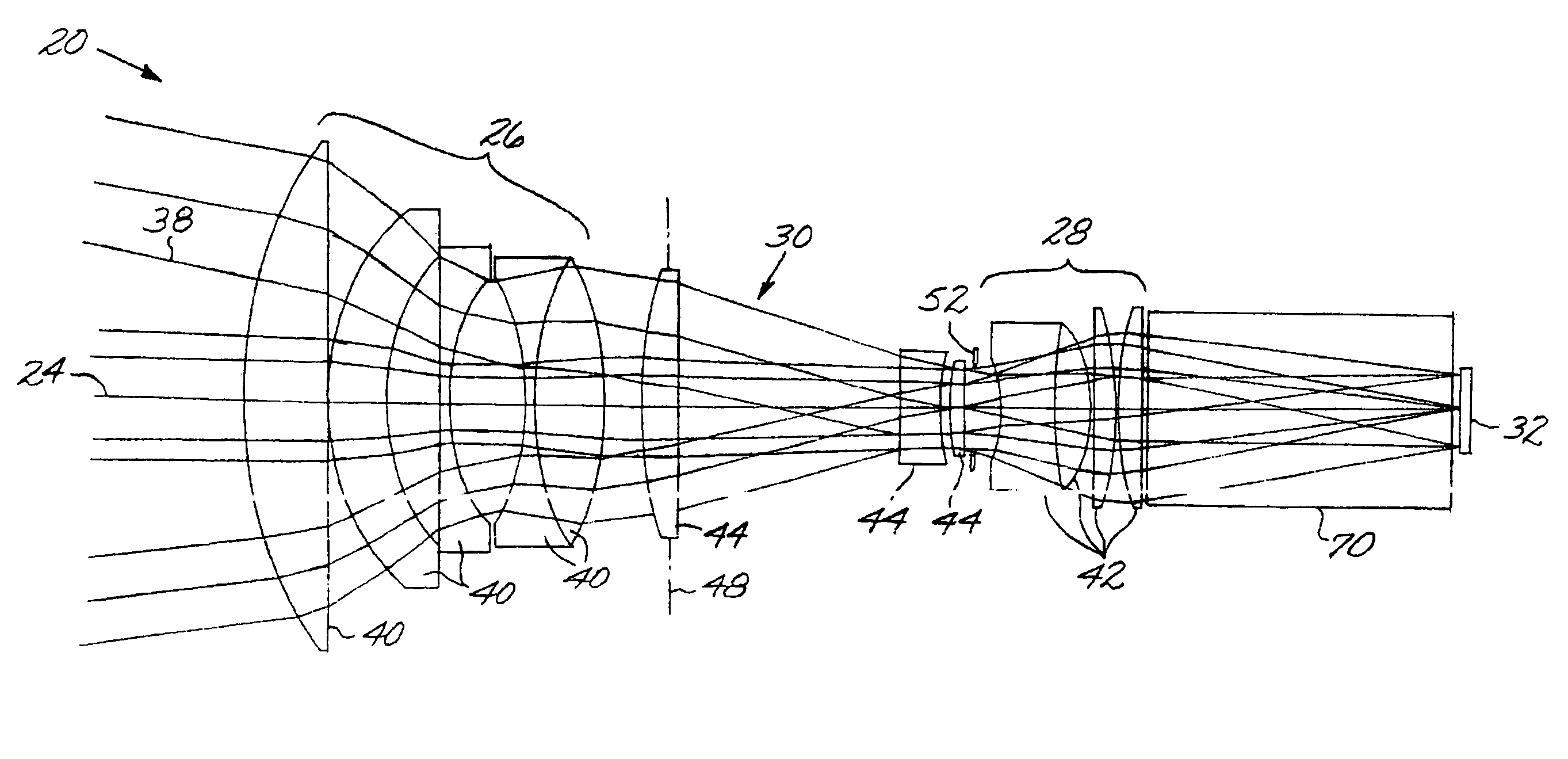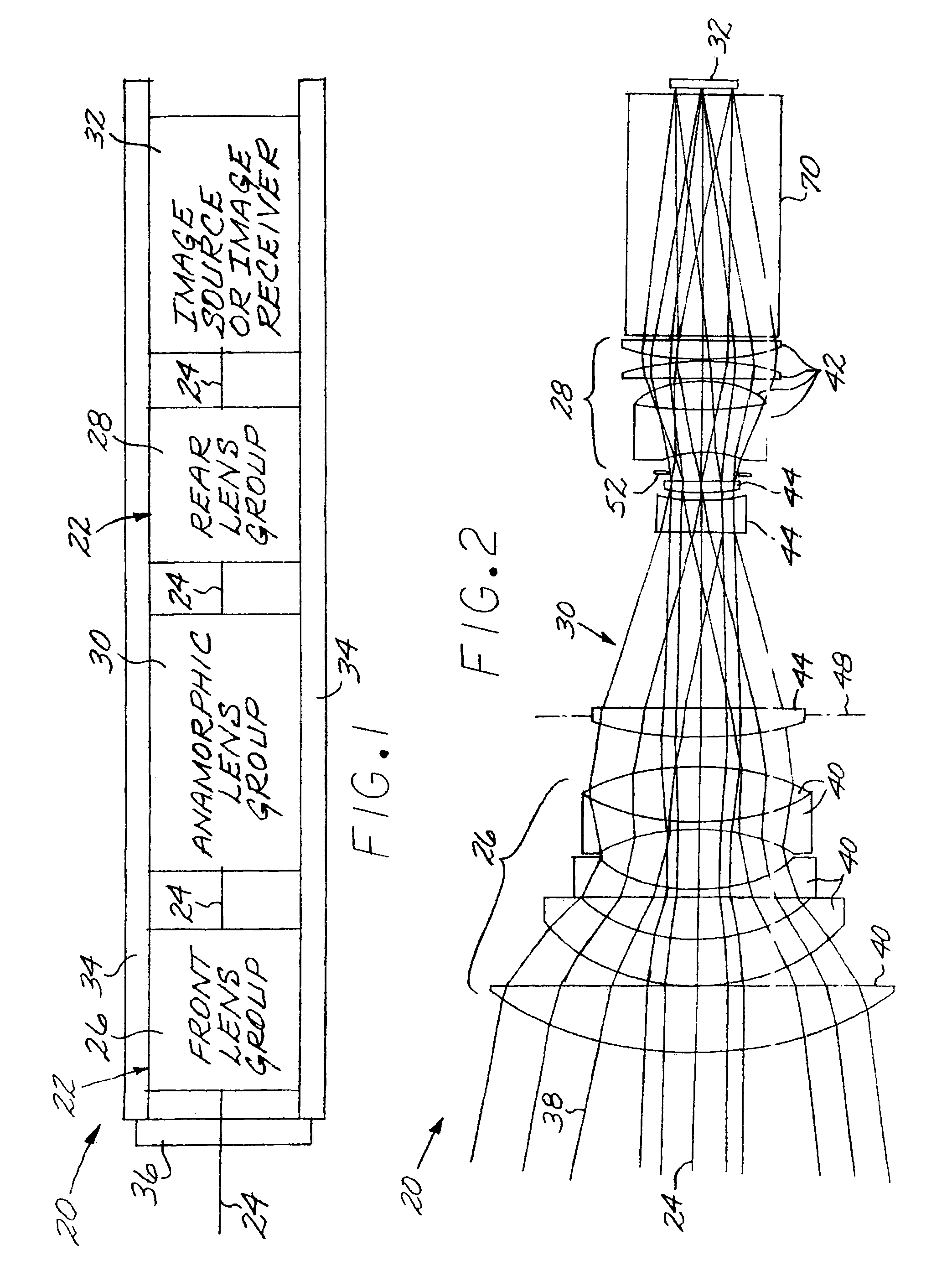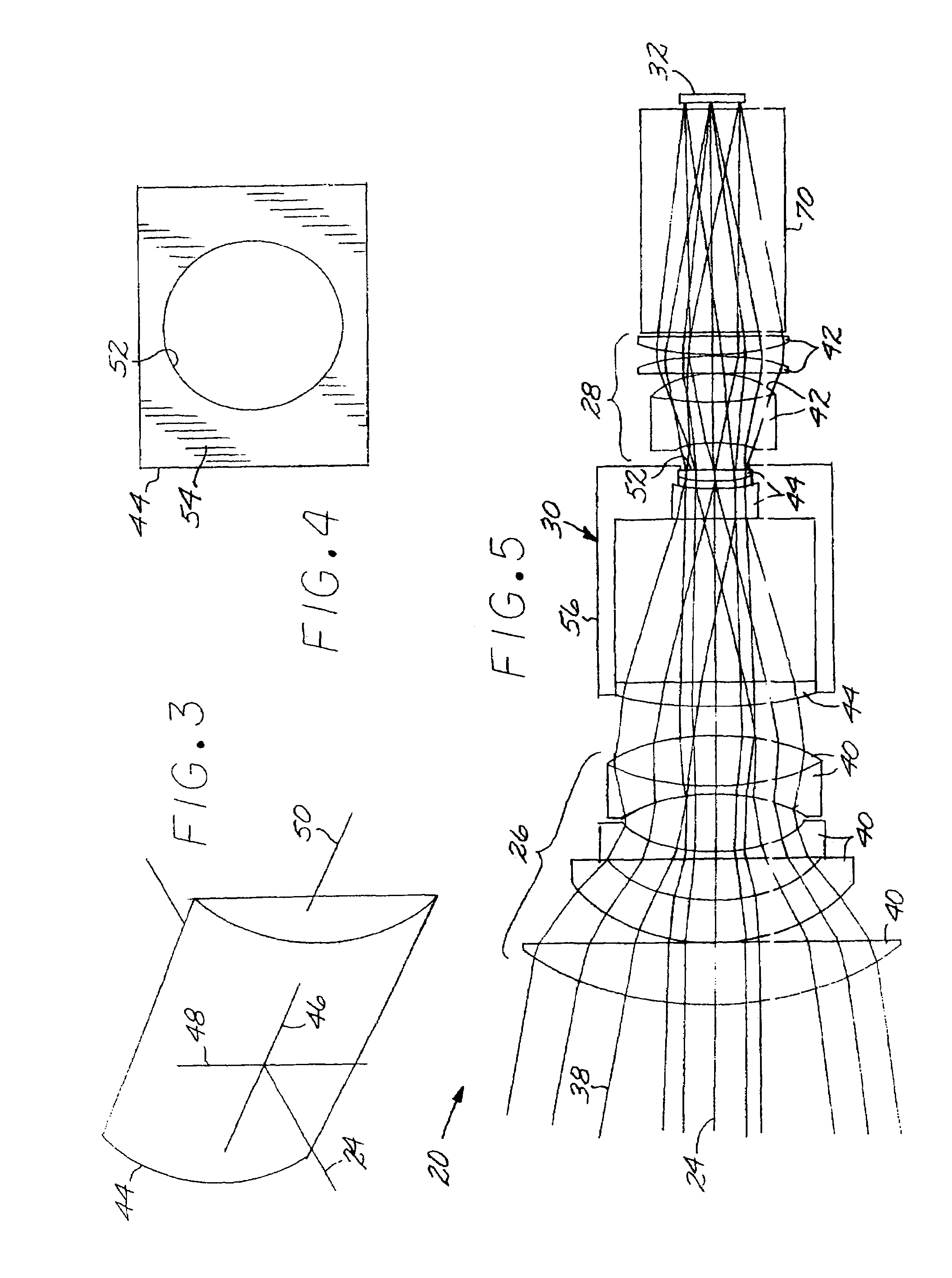Optical system including an anamorphic lens
an optical system and anamorphic technology, applied in the field of optical systems including anamorphic lenses, can solve the problems of difficult conversion between various formats of existing projectors, problems such as recording devices, and heavy weight, and achieve the effect of high flexibility and easy insertion or removal
- Summary
- Abstract
- Description
- Claims
- Application Information
AI Technical Summary
Benefits of technology
Problems solved by technology
Method used
Image
Examples
Embodiment Construction
[0025]FIG. 1 depicts in block-diagram form an optical system 20 having a primary lens group 22 with a central beam path 24 therethrough. The primary lens group 22 includes a front lens group 26 and a rear lens group 28. An anamorphic lens group 30 lies on the central beam path 24 between the front lens group 26 and the rear lens group 28. The anamorphic lens group 30 may not be placed to the left (in the view of FIG. 1) of the front lens group 26 or to the right (in the view of FIG. 1) of the rear lens group 28. There is an image transceiver 32 that may be either an image source or an image receiver. The present approach may be used with visible or non-visible light such as infrared light, with the proper choice of optical components.
[0026]If the image transceiver 32 is an image source, the optical system 20 is a projector, and light travels (from right to left in the view of FIG. 1) on the central beam path 24 successively from the image source 32, through the rear lens group 28, t...
PUM
 Login to View More
Login to View More Abstract
Description
Claims
Application Information
 Login to View More
Login to View More - R&D
- Intellectual Property
- Life Sciences
- Materials
- Tech Scout
- Unparalleled Data Quality
- Higher Quality Content
- 60% Fewer Hallucinations
Browse by: Latest US Patents, China's latest patents, Technical Efficacy Thesaurus, Application Domain, Technology Topic, Popular Technical Reports.
© 2025 PatSnap. All rights reserved.Legal|Privacy policy|Modern Slavery Act Transparency Statement|Sitemap|About US| Contact US: help@patsnap.com



